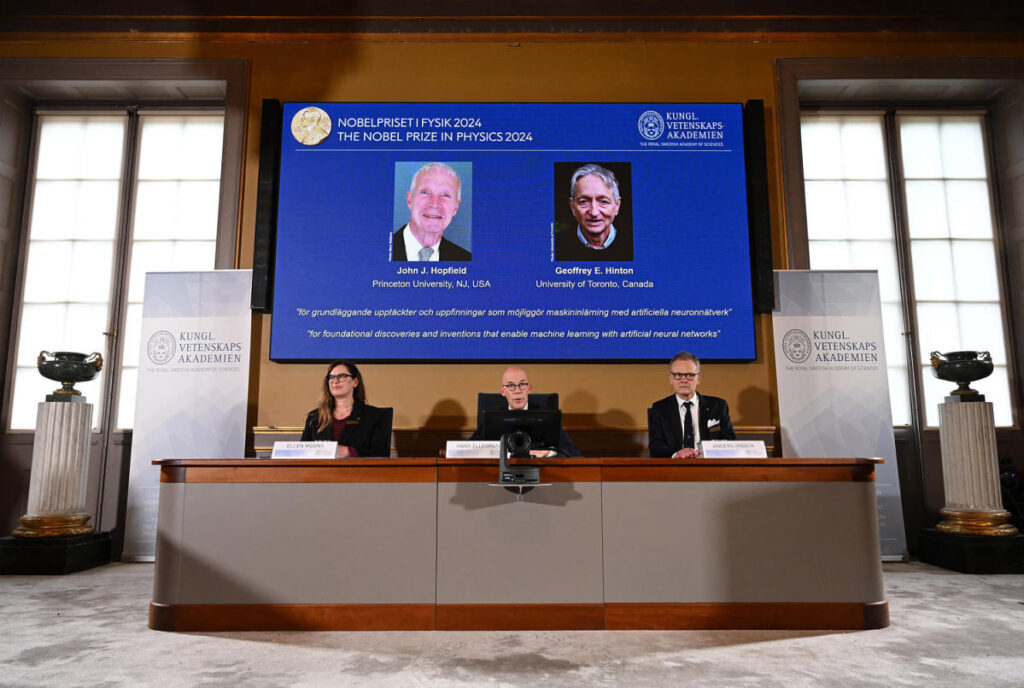On Tuesday, the Nobel Prize in Physics was awarded to two esteemed academicians: John J. Hopfield, a 91-year-old professor at Princeton University, and Geoffrey E. Hinton, a 76-year-old professor at the University of Toronto. Their groundbreaking research has been instrumental in establishing foundational principles that underpin a significant aspect of artificial intelligence (AI), particularly in the domain of machine learning. The Nobel Committee, represented by chair Ellen Moons, highlighted that the work of these two pioneers has not only contributed to advanced decision-making processes for humans but has also been molded through the application of physics concepts since the 1980s. Both of these notable figures have dedicated their efforts to exploring how tools from their scientific backgrounds can be utilized to create systems that learn and adapt based on the data they encounter.
The importance of machine learning—one of the core tenets of AI—has become increasingly apparent in our daily lives. According to Moons, the technologies derived from Hopfield’s and Hinton’s research are now integrated into various applications we encounter regularly, including facial recognition systems and language translation services. However, she also cautioned that while the rapid advancement of AI technology offers many benefits, it simultaneously poses significant challenges and concerns about the future implications of such developments. As AI continues to become more sophisticated, it raises critical questions regarding ethics, society, and the responsibilities of those who create these systems. This duality of promise and peril characterizes the current landscape of AI research and application.
John J. Hopfield’s contributions to machine learning began in 1982 with the invention of the “Hopfield network.” This innovative framework allowed for the development of artificial neural networks that mimic certain aspects of human brain function. Hopfield networks revolutionized the ability of machines to store and retrieve memory patterns, making them essential for various AI applications. Geoffrey Hinton took inspiration from Hopfield’s work to develop the “Boltzmann machine,” a model capable of classifying images, among other tasks. Both of their contributions represent crucial advancements in the field of AI, demonstrating how interdisciplinary approaches can drive technological innovation.
The recognition of Hopfield and Hinton with the Nobel Prize underscores the profound impact their research has had not only on the realm of physics but also on the ever-expanding domain of artificial intelligence. Machine learning, which relies on algorithms to analyze large datasets and “learn” from them, has become a fundamental aspect of AI that is employed across various sectors, from healthcare to entertainment. The ability of computers to assimilate data and make decisions has significantly changed how industries operate, allowing for improved efficiency and reliability. By providing the theoretical frameworks that underpin machine learning, the contributions of Hopfield and Hinton have been pivotal in shaping modern AI technologies.
As society increasingly integrates AI technologies into everyday functions, the ethical considerations surrounding their use grow ever more critical. The ease of access to AI-driven services, such as those facilitating diagnostic capabilities in healthcare or personalizing media suggestions, raises questions regarding data privacy, security, and bias within algorithms. Ellen Moons acknowledged these concerns during the Nobel announcement, emphasizing the need for ongoing dialogue about the implications of AI’s rapid growth. Hopfield and Hinton’s pioneering theories provide a foundation for understanding the mechanics of such technologies, which is essential for identifying best practices and ensuring that developments in AI are aligned with ethical standards and societal benefit.
In sum, the Nobel Prize awarded to John J. Hopfield and Geoffrey E. Hinton recognizes their remarkable contributions to the field of machine learning, an area that has fundamentally altered how we engage with technology today. Their innovative work reflects a broader trend within the scientific community, where interdisciplinary collaboration continues to yield significant advancements, particularly in artificial intelligence. As we stand on the threshold of a future increasingly influenced by AI, the need for responsible research and application has never been more pressing. The dual promise of AI as a transformative force for good, alongside the challenges it presents, will require ongoing attention, thoughtful discourse, and commitment from experts like Hopfield and Hinton who continue to navigate this complex landscape.

